|
The brave new world of e-publishing and self-publishing can be summed up by one sentence you hear everywhere: "There's at least one book in everyone." A frightful thought, apocalyptic even, when you imagine yourself to be the assumed reader. If you are this would-be author, however, it's a different story. You will rather go with the other omni-present statement of the industry: "There's a reader for every published book." No matter how small your niche or your readership, you will want to try your luck. But how to go about it?
The traditional publishing scene has shrunk to five or six main publishers catering almost exclusively to established, famous authors and chasing only the next bestseller candidates. A few years from now they will have been swallowed up into a single conglomerate (Random House) of arch-conservative (and probably deeply author-phobic) capitalists. If you are not a famous writer and your book proposal doesn't have "bestseller" written all over it, together with a six-page marketing plan to be executed solely by you, the author, forget it. You won't even find an agent and without one, the doors remain closed to you. Or, if you still wish to be part of the old "elite," better prepare to be a work-horse for little gain. You will most likely have to come up with the funds for your own editor and copy editor (yes, even with a brand-name publisher), your proof-reader, your publicist and your own advertising – even pay for the privilege of getting a bookstore reading, and finally pay for shelf-space at that store. If your book costs $ 24.95 you can expect to make less than a dollar per sold copy, given the Amazon and other online sales discounts. (Amazon holds 27% of all book sales and 45 % of the e-book market.) You may wonder what the publisher ends up DOING with the rest of the money from your sales – that 93,5 % you are not getting?
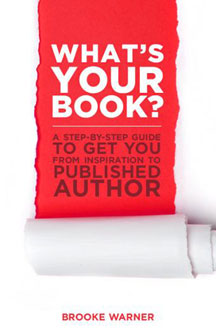 Do the math, and then imagine that your self-published book can get you close to 100% of your sales price. Of course, the work and money investment you put into your book remains the same, although with another crucial difference: you will be able to control your title, your cover design, the look of your pages, the dust jacket, back page, and your content from A to Z. How crucial is this difference? Ask me or any author I know and hear the stories of how this or that fine, elitist publisher ruined the chances of a book by insisting on inane changes of your language and content, picking a weird title, choosing an off-putting cover, concocting a stupid summery, and so on. There's even worse. You have finally and in spite of all booked a big radio or TV interview – but the books are not in the stores and not even available on Amazon. What a rude awakening to the incompetence of publishers and their minions -- and still THEY make the money, if there is any money to make. Do the math, and then imagine that your self-published book can get you close to 100% of your sales price. Of course, the work and money investment you put into your book remains the same, although with another crucial difference: you will be able to control your title, your cover design, the look of your pages, the dust jacket, back page, and your content from A to Z. How crucial is this difference? Ask me or any author I know and hear the stories of how this or that fine, elitist publisher ruined the chances of a book by insisting on inane changes of your language and content, picking a weird title, choosing an off-putting cover, concocting a stupid summery, and so on. There's even worse. You have finally and in spite of all booked a big radio or TV interview – but the books are not in the stores and not even available on Amazon. What a rude awakening to the incompetence of publishers and their minions -- and still THEY make the money, if there is any money to make.
So it's no wonder that we are in the full throes of a publishing revolution, with offers that are hard to resist. Avoiding any storage with print on demand (POD), publishing with Amazon via Kindle books and Kindle Singles (short books) with Amazon's production site createspace.com; covering the B&N (Barnes&Noble) market via smashwords.com; going independent via i-universe or bookbaby with package deals, etc. etc. There are already so many choices of alternative publishing that one risks not seeing the forest for the trees. How to find a way through this brand-new labyrinth? A lot of study is needed, and there is a lot of dizzying and confusing information available online and in guide books galore.
As an old-timer who has gone through traditional publishing several times in the past, I decided to look at the interesting option of hybrid publishing – and to take a boot-camp workshop in self-publishing to start exploring options for my next autobiographical fiction book.
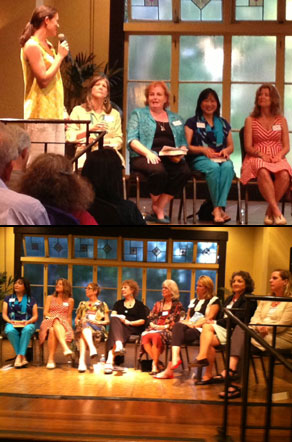 I went to the first presentation of She Writes Press, the new publishing venture of an online community of 22,000 women writers: shewrites.com. In an elegant Berkeley hotel, the first ten "pioneers" (among thirty to be published by the press in its first year) were presenting their books. Hybrid publishing mixes self-publishing with production services the publisher gets paid for by the author. The authors are vetted and chosen for the privilege of getting a publisher's official "roof" over their head. I went to the first presentation of She Writes Press, the new publishing venture of an online community of 22,000 women writers: shewrites.com. In an elegant Berkeley hotel, the first ten "pioneers" (among thirty to be published by the press in its first year) were presenting their books. Hybrid publishing mixes self-publishing with production services the publisher gets paid for by the author. The authors are vetted and chosen for the privilege of getting a publisher's official "roof" over their head.
The first ten books on display were impeccably published, exactly like any quality main-stream paperbacks. The ten authors happily talked about their experience. Getting guidance, support and every practical help needed was paramount for first-timers, but I also heard similar praise from previously published authors who told me they had no desire to jump through the million hoops of traditional publishing once again. All the authors talked about the mutual support, the give and take of being part of a group, instead of facing the leap into the public eye alone.
There are by now many similar communities of writers turning toward hybrid publishing. One example in the San Francisco Bay Area is
Red Room. At the last Diane Middlebrook Salon in San Francisco, Red Room publisher Ivory Madison talked about developing another promising model: finding a particular sponsor for every book chosen for publication to cover the cost.
But once the books are there, what next? Distribution is only one problem. The main challenge, of course, is to create a demand in order to get distribution to kick in.
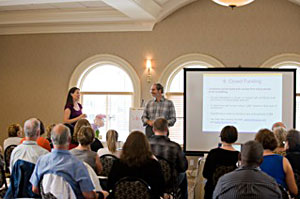 This is where the second event came in. The first "Self-Publishing Summit 2013" in Berkeley was organized by the publisher of She Writes Press, Brooke Warner, together with online publishing expert Howard VanEs (Letswritebooks.net). Brooke Warner has many years of traditional publishing experience and is the author of a small, handy, expert guide book to self-publishing, What's Your Book? A Step by Step Guide to Get You From Inspiration to Published Author. Howard VanEs, with a background in advertising, has a dozen non-fiction books out on Amazon and Kindle, reporting that every one of them is making profits. This is where the second event came in. The first "Self-Publishing Summit 2013" in Berkeley was organized by the publisher of She Writes Press, Brooke Warner, together with online publishing expert Howard VanEs (Letswritebooks.net). Brooke Warner has many years of traditional publishing experience and is the author of a small, handy, expert guide book to self-publishing, What's Your Book? A Step by Step Guide to Get You From Inspiration to Published Author. Howard VanEs, with a background in advertising, has a dozen non-fiction books out on Amazon and Kindle, reporting that every one of them is making profits.
The First Self-Publishing Summit (at the Shattuck Hotel) was an electrifying beat-by-beat teaching weekend where every moment was filled with technical know-how about the brave new world of do-it-yourself publishing. The figures gave me pause: E-Books already sell 2 to 1 over hard copies.
Particularly hot themes were "How to Think Like a Publisher", "How to Quadruple your Amazon Royalties", "How to Complete a Book in 45 Days or less" and, of course, "Secrets of Building Your Platform" (one main secret: start building your database.) Marketing your book and getting sales was paramount throughout the weekend – at times creating the specter of every person in the packed room chasing the dream of becoming a bestselling author with thousands of followers on their Facebook, Twitter, YouTube and LinkedIn platforms.
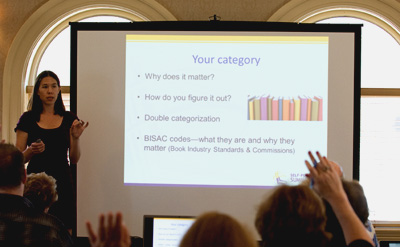
I liked the challenge, being faced with new and sometimes still confusing terms and concepts (what is a Kindle Single, a Kindle KDP Give-Away, a landing place, what are Pinterest book storyboards, etc.) For someone like me who easily gets dizzy reading about Platform craze, particularly welcome news were about Kindle: the suggestion to create a small Kindle book with one chapter of my book, add visual or audio content or anything I like, and get started. This could be a new way of "serializing" a book. (A few days after the Summit, I read that Margaret Atwood is planning to serialize her next novel!) Then create interest through a "KDP promo" or Free-Give-Away action of Kindle books. Do it with someone who knows how. You may get some sales. Then do it again with your next chapter… Build up muscle. Finally, the best news: at any time you can still go ahead and publish your entire manuscript as a Kindle book.
Most encouraging to me was Brooke Warner's advice to "figure out your team": choose your editor, designer, publishing consultant, marketing team and publicist with care. You don't have to figure it all out by yourself, constantly fighting with overwhelm, afraid you'll never get any more writing time because your "platforming," marketing, selling will eat you up. (I loved the advice of making use of fiverr.com, the website that offers all kinds of editing and marketing services for $ 5 a pop.) Or, I would add, use services like taskrabbit.com to find line-editors, proof-readers and other help in the area where you live.
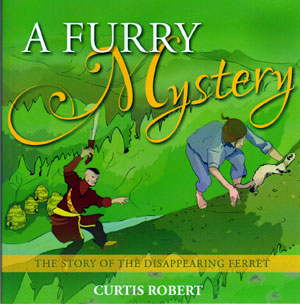 The magic of self-publishing came across in the most lively, charming way when a ten-year-old boy, Curtis Robert, presented his first self-made, self-published adventure book for kids, A Furry Mystery, cleverly strategized with Howard VanEs, produced in four months, and marketed with the help of an enterprising mom. Little Curtis stood in front of the packed room and answered the question why he likes to write: The magic of self-publishing came across in the most lively, charming way when a ten-year-old boy, Curtis Robert, presented his first self-made, self-published adventure book for kids, A Furry Mystery, cleverly strategized with Howard VanEs, produced in four months, and marketed with the help of an enterprising mom. Little Curtis stood in front of the packed room and answered the question why he likes to write:
"Because I like to express my feelings."
To sum up what I took home from the Summit: It's possible to get a new book out into the world. It could be fun. There is a lot more to learn about the new technological frontier, but the next workshop or boot-camp is already waiting for you next door. (As I am writing this, the fashionable San Francisco literature festival Litquake is offering digi.lit, a full-day conference that will "explain and demystify the new digital publishing landscape" with the participation of authors, publishers, editors, marketers, agents, and booksellers. There is reason to be optimistic..
Photos: Jeremy Cortez
|